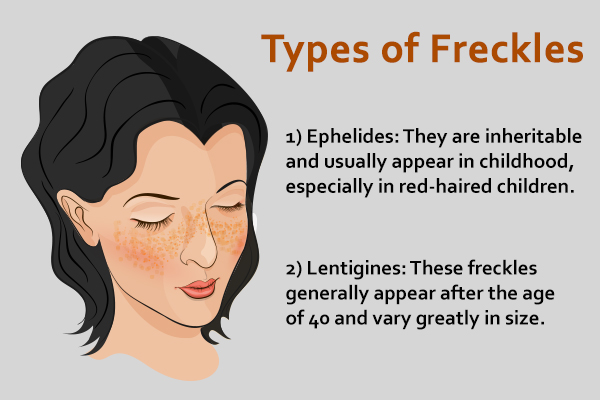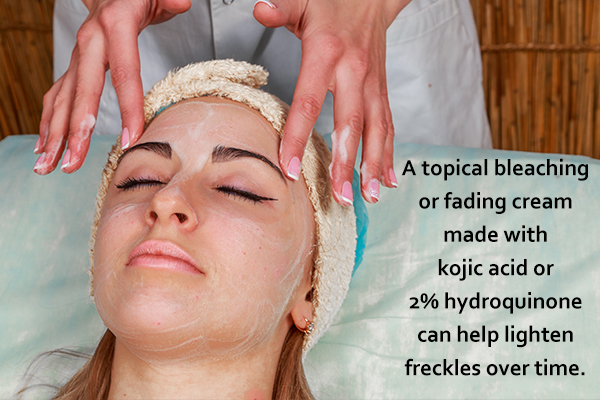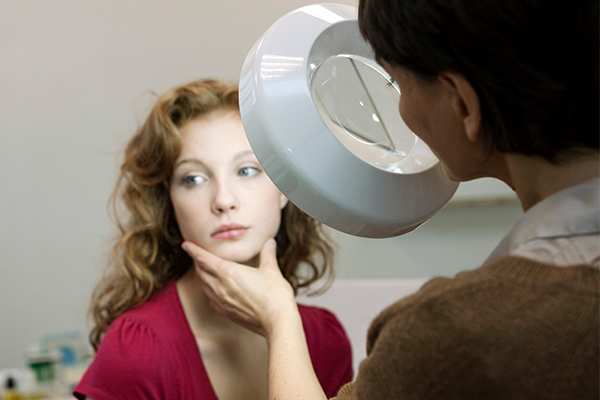In this article:
Freckles refer to brown, flat, round spots that appear on the skin. They may indicate skin damage caused by sun exposure and therefore are commonly seen on the areas that are often exposed to the sun, such as the face and arms.

Freckles are usually harmless and vary greatly in size. People of younger age with fair complexion or regular sun exposure are highly prone to developing freckles. (1)
Types of Freckles

Freckles are categorized into the following two types:
1. Ephelides
These freckles are generally less than 3 mm in diameter and are more common among fair-skinned people. They are inheritable and usually appear in childhood, especially in red-haired children. (2)
Ephelides start fading as the person ages. They are more visible in summer and can fade or disappear in winter.
2. Lentigines
These freckles are uniform-edged, flat, brown lesions that commonly appear in fair-skinned people.
Lentigines can also be seen in sun-exposed areas, dark-skinned people, and those who tan easily. (3) These freckles generally appear after the age of 40 and vary greatly in size.
Causes of Freckles
The development of freckles chiefly depends on genetic predisposition and sun exposure.
Melanin, a pigment produced by melanocyte cells in the skin, prevents sun damage by reflecting and absorbing the UV rays emitted by sunlight or tanning booths. However, some melanocytes may produce more melanin in response to sun exposure, leading to the development of freckles.
Fair-skinned people have lower melanin content in the skin and are thus more prone to freckles and even sunburn. Similarly, freckles are common in people with blonde or red hair and light-colored eyes.
Treatment for Freckles

Since the freckles that develop naturally fade with age or the seasons, they do not require treatment, especially because they are harmless. However, if you are bothered by the freckles on your face or skin, you may consult your doctor for the following treatments:
- Bleaching or fading creams: A topical bleaching or fading cream made with kojic acid or 2% hydroquinone can help lighten freckles over time. (4)
- Retinoids: These topical creams are useful for treating freckles in conjunction with bleaching creams, adapalene, tretinoin, and tazarotene. These may show results after several months of application.
- Cryosurgery: This involves the use of liquid nitrogen to treat freckles. However, it only works for some kinds of freckles.
- Laser treatments: While expensive, laser treatments are highly effective for the treatment of freckles. (5) These work by killing the melanocytes in the skin epidermis.
- Photofacials or intense pulsed light treatments: These treatments use intense light sources to help fade and remove freckles.
- Chemical peels: These are another popular method for managing hyperpigmentation and giving the skin an even tone. (6)
Diagnosing Freckles

Since freckles are rarely a medical concern, you only need to consult a doctor for determining the cause of the freckles if they are:
- Asymmetrical
- Uneven or bumpy bordered
- Different colors
- Bigger than ¼ inch in diameter
- Changing in size, color, shape, or elevation over time
The doctor will observe the freckles closely and may order a skin biopsy if required.
When to See a Doctor
Some types of skin cancers may cause the development of freckle-like spots on the skin. Therefore, you must consult a doctor if the freckles appear suddenly or change in physical features.
Moreover, you must consult a doctor if a freckle bleeds, itches, grows, is raised like a mole, or is different from the freckles surrounding it.
Final Word
Freckles appear as different pigmented spots on the skin, which are generally harmless. Regardless, to be cautious, it is suggested to visit a dermatologist to check whether you should worry about them.
Since freckles are not a medical concern, they do not require treatment. However, you can consult your doctor for different treatment methods that can help lighten the freckles if you are bothered by their appearance.

- Was this article helpful?
- YES, THANKS!NOT REALLY


